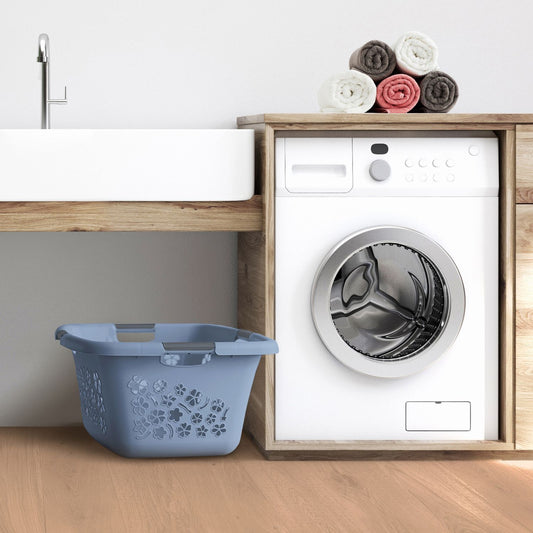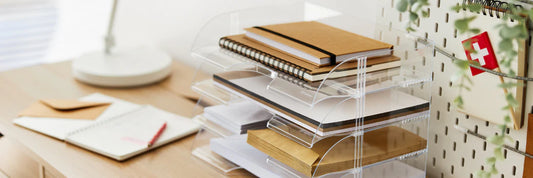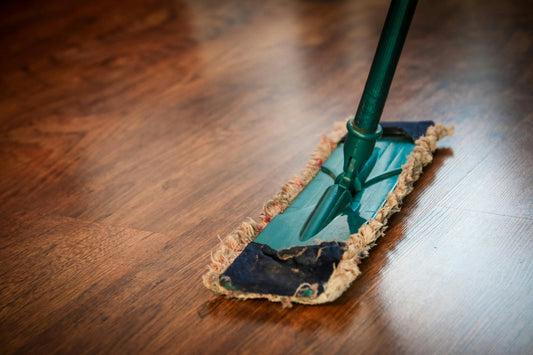Ice in the freezer forms when water vapor in the air inside the freezer condenses and freezes on the surfaces of the freezer. This can happen when warm, humid air enters the freezer and then quickly cools down, causing moisture in the air to condense in the form of water droplets. Over time, these water droplets can freeze into ice, creating a layer of ice covering the walls of the appliance.
There are several different methods on how to quickly defrost a refrigerator. Below we present a few ideas that will help you properly defrost your refrigerator.
WARNING! Before you start defrosting the refrigeratorBefore defrosting the freezer, you should perform a few important tasks to prepare:
- Remove all food. Take out freezing containers and place them in the refrigerator or another fridge to keep them cold while defrosting the freezer. This will also make it easier to check how much ice has accumulated in the freezer.
- Turn off and preferably unplug the freezer and disconnect it from the power source. Completely unplugging the fridge will help prevent electrical accidents during defrosting.
- Empty the ice maker. If the freezer is equipped with an ice maker, it should be emptied before defrosting. This will prevent ice from melting and creating a mess during the defrosting process.
- Protect the floor. Place towels or other absorbent materials around the base of the freezer to catch the water dripping during the melting frost. This will help prevent water damage to the floors.
By taking these steps before defrosting the freezer, you can ensure that the process goes smoothly, and the food remains safe and cold during the defrosting process.
Before defrosting the freezer, you should perform a few important tasks to prepare:
- Remove all food. Take out freezing containers and place them in the refrigerator or another fridge to keep them cold while defrosting the freezer. This will also make it easier to check how much ice has accumulated in the freezer.
- Turn off and preferably unplug the freezer and disconnect it from the power source. Completely unplugging the fridge will help prevent electrical accidents during defrosting.
- Empty the ice maker. If the freezer is equipped with an ice maker, it should be emptied before defrosting. This will prevent ice from melting and creating a mess during the defrosting process.
- Protect the floor. Place towels or other absorbent materials around the base of the freezer to catch the water dripping during the melting frost. This will help prevent water damage to the floors.
By taking these steps before defrosting the freezer, you can ensure that the process goes smoothly, and the food remains safe and cold during the defrosting process.
How to quickly defrost a refrigerator
Do you want to quickly defrost the freezer? Below you will find a few tricks that will stop the layer of ice from covering the inside of the freezer:
Use a hair dryerYou can speed up the process of defrosting the refrigerator by using a hairdryer for this purpose. Set the hairdryer to low temperature and hold it about 10 centimeters away from the ice. Move the hairdryer back and forth until the ice starts to melt. Be careful not to hold the hairdryer too close to plastic parts, as they may melt.
Bowl with hot waterAnother method of quickly defrosting the refrigerator is to place a bowl of hot water inside and close the freezer door. This will create steam that will help melt the ice. You can also place a towel or some paper towels soaked in warm water on the ice. This will help the layer of ice melt faster, reducing the defrosting time.
You can speed up the process of defrosting the refrigerator by using a hairdryer for this purpose. Set the hairdryer to low temperature and hold it about 10 centimeters away from the ice. Move the hairdryer back and forth until the ice starts to melt. Be careful not to hold the hairdryer too close to plastic parts, as they may melt.
Another method of quickly defrosting the refrigerator is to place a bowl of hot water inside and close the freezer door. This will create steam that will help melt the ice. You can also place a towel or some paper towels soaked in warm water on the ice. This will help the layer of ice melt faster, reducing the defrosting time.
Plastic or wooden scraperUse a plastic scraper. You can also use a plastic scraper or spatula to gently scrape large pieces of ice that have accumulated in the refrigerator. Be careful not to use sharp or metal objects, as this may damage the interior of the refrigerator.
Use a plastic scraper. You can also use a plastic scraper or spatula to gently scrape large pieces of ice that have accumulated in the refrigerator. Be careful not to use sharp or metal objects, as this may damage the interior of the refrigerator.
Let the ice melt by itself.Turn off the refrigerator and leave the doors open. The simplest method is to turn off the refrigerator and leave the doors open. This allows warm air to circulate inside the refrigerator, which will help speed up the defrosting process. Place towels or a shallow container under the refrigerator to collect the dripping water.
Unfortunately, this method of defrosting the refrigerator takes some time, so we recommend solutions that will speed up this process.
After the ice has melted, wash the inside of the refrigerator with warm soapy water and dry it thoroughly before turning it back on. It is a good idea to regularly defrost the refrigerator to prevent frost buildup and ensure its efficient operation.
Remember how to properly arrange things in the refrigerator. Proper organization of the refrigerator will help you with this.
Turn off the refrigerator and leave the doors open. The simplest method is to turn off the refrigerator and leave the doors open. This allows warm air to circulate inside the refrigerator, which will help speed up the defrosting process. Place towels or a shallow container under the refrigerator to collect the dripping water.
Unfortunately, this method of defrosting the refrigerator takes some time, so we recommend solutions that will speed up this process.
After the ice has melted, wash the inside of the refrigerator with warm soapy water and dry it thoroughly before turning it back on. It is a good idea to regularly defrost the refrigerator to prevent frost buildup and ensure its efficient operation.
Remember how to properly arrange things in the refrigerator. Proper organization of the refrigerator will help you with this.
Defrosting the freezer – why is it necessary at all?The refrigerator should be defrosted regularly for several reasons:
- To maintain energy efficiency: the accumulation of ice in the freezer or on the walls of the refrigerator can reduce the device's efficiency. This happens because ice acts as an insulator, hindering the circulation of cold air and maintaining a constant temperature.
- To prevent damage to the device: Accumulated ice can exert pressure on the walls of the refrigerator or freezer, which over time can cause damage. It can also lead to damage to the fan or other moving parts of the device.
- To prevent the growth of bacteria and mold: Too much ice in the freezer or on the walls of the refrigerator can create a damp environment, ideal for the growth of bacteria and mold. This can pose a health risk, especially if you store food in the refrigerator or freezer.
- To improve food quality and safety: When ice accumulates in the freezer, it can cause freezer burn, which can affect food quality. Moreover, if there is too much frost in the refrigerator, it can affect the temperature and make it difficult to store food at a safe temperature.
The greater amount of work required to maintain the appropriate temperature in the refrigerator is not only a matter of electricity demand but also the durability of the cooling system.
The refrigerator should be defrosted regularly for several reasons:
- To maintain energy efficiency: the accumulation of ice in the freezer or on the walls of the refrigerator can reduce the device's efficiency. This happens because ice acts as an insulator, hindering the circulation of cold air and maintaining a constant temperature.
- To prevent damage to the device: Accumulated ice can exert pressure on the walls of the refrigerator or freezer, which over time can cause damage. It can also lead to damage to the fan or other moving parts of the device.
- To prevent the growth of bacteria and mold: Too much ice in the freezer or on the walls of the refrigerator can create a damp environment, ideal for the growth of bacteria and mold. This can pose a health risk, especially if you store food in the refrigerator or freezer.
- To improve food quality and safety: When ice accumulates in the freezer, it can cause freezer burn, which can affect food quality. Moreover, if there is too much frost in the refrigerator, it can affect the temperature and make it difficult to store food at a safe temperature.
The greater amount of work required to maintain the appropriate temperature in the refrigerator is not only a matter of electricity demand but also the durability of the cooling system.
How long does it take to defrost a refrigerator?
The time needed to defrost the refrigerator depends on several factors, such as the size of the appliance, the amount of accumulated ice, and the defrosting method. Here are some general tips on how long it may take to defrost a refrigerator:
- Refrigerators with automatic defrosting: If the refrigerator has an automatic defrost cycle, it should periodically defrost itself. This usually takes a few hours, and you may hear hissing or sizzling as the ice melts.
- Refrigerators with manual defrosting: If you have a refrigerator with manual defrosting, you need to defrost it yourself. Depending on the amount of accumulated ice, this can take from a few hours to overnight.
- Quick defrosting methods: If you use a hairdryer, a bowl of hot water, or a plastic scraper to speed up the defrosting process, it can take anywhere from 30 minutes to a few hours, depending on the amount of accumulated ice.
It should be remembered that you should never use sharp or metal tools to remove ice, as this may damage the interior of the refrigerator. Always use plastic or other non-metal tools to avoid damaging the appliance. Additionally, remember to wipe up excess water or moisture after defrosting the refrigerator, and remove food scraps to prevent damage or the development of mold or bacteria.
How often should you defrost the freezer?
The frequency with which you should defrost the freezer depends on several factors, including how often it is used and the amount of frost buildup. A classic cleaning schedule recommends defrosting the freezer at least once a year or more often if you notice significant frost accumulation.
If you have a no frost freezer, manual defrosting may not be necessary as often. These freezers are designed to automatically defrost the evaporator coils, so you shouldn't notice a large buildup of frost inside. However, it is still a good idea to keep an eye on the freezer and manually defrost it if you notice significant frost accumulation.
In every refrigerator model, frost buildup inside the appliance can vary in timing. In some cases, you will need to defrost the refrigerator frequently, while in others, you may have peace for a longer time.
What to do with frozen food when defrosting the freezer?
When defrosting the freezer, it is important to take the appropriate steps to ensure that frozen food remains safe to eat. Below you will find some tips on what to do with frozen food while defrosting the freezer.
Remove all frozen food from the freezer and place it in the refrigerator or find a cool place for it to stay cold while the freezer is defrosting. You can also transfer the food to a special thermal bag that will keep the inside at low temperatures.
Use ice packs or dry ice. If you do not have a cooler or refrigerator to store frozen food at low temperatures, you can use ice packs or dry ice to keep it frozen. Be sure to carefully follow the instructions for using these products to ensure that the food remains at a safe temperature.
Quickly consume the food. Once the food starts to thaw, it should be consumed within a few days. If you have any doubts about the safety of the food, it is best to err on the side of caution and throw it away.
Refreeze food only when it is still cold. If the food in the freezer is still cold to the touch, you can refreeze it after defrosting the freezer. However, if the food has completely thawed, it should not be refrozen.
Cleaning and disinfecting the freezer: After removing all the food from the freezer, be sure to thoroughly clean and disinfect the inside of the freezer to prevent the growth of bacteria or mold. It is best to use dish soap for this. Remember to clean not only the shelves but also every single fridge organizer.
By taking these steps, you can ensure that frozen food remains safe and that you do not waste food during the defrosting process.
Frost in the fridge
Frost in the refrigerator can be a sign of several different problems. Here are some possible causes of frost in the refrigerator:
- Door seal - if the refrigerator door seal is damaged or leaking, warm air from outside can enter the refrigerator and cause condensation and freezing of moisture inside the refrigerator.
- Overloading — if you put too much food in the refrigerator, it can block the airflow and cause moisture to condense and freeze on the surfaces inside the refrigerator.
- Temperature settings — If the temperature settings in the refrigerator are too low, it may cause excess moisture to form and freeze inside the refrigerator.
- Defrosting system — If the no frost defrosting system in the refrigerator is not working properly, it may cause excessive frost buildup inside the refrigerator.
How to clean the freezer?
Cleaning the freezer is an important part of maintaining the appliance and ensuring its efficient operation.
- Wash the interior — Using a solution of warm water along with dishwashing liquid, wash the interior of the freezer with a soft cloth or sponge. Remember to wipe all surfaces, including shelves, doors, and walls.
- Rinse with clean water — After washing, rinse the inside of the freezer with clean water and wipe dry with a towel.
- Clean the casing — Clean the outer part of the freezer with a solution of warm water and mild detergent. Remember to wipe all surfaces, including the doors and handles.
How to defrost a drawer freezer?
Defrosting a drawer freezer is similar to defrosting a regular upright freezer.
The accumulated ice on the walls of the device is troublesome. However, it is worth remembering that it also has an adverse effect on how the freezer and refrigerator operate. We do not always have time to remove the ice, but in extreme cases, it can lead to damage to the freezer.
In general, regular defrosting of the refrigerator can help maintain its efficiency and prevent damage. Additionally, it ensures that food remains fresh and safe to consume and reduces power consumption.






